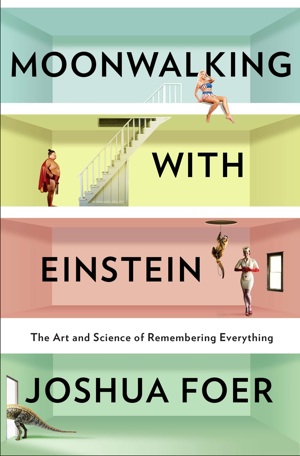
Originally published in the Northside San Francisco in October 2011
We are able to find everything in our memory, which is like a dispensary or chemical laboratory in which chance steers our hand sometimes to a soothing drug and sometimes to a dangerous poison. —Marcel Proust
Ever wonder why you lose your car keys but for some reason can remember the lyrics to a song? So did Joshua Foer. In his first book, Foer explores the topic of memory: when we had it, how we lost it and how to get it back.
While researching a group of memory athletes for a science article, Foer began a year long adventure that ended in his participation in the 2006 U.S.A. Memory Championship. He won a record in speed cards by memorizing a deck of 52 cards in one minute and forty seconds.
So how did this self-described ordinary guy develop this seemingly impossible skill? While telling his story, the author offers up a history of mnemonics, or memory techniques. In antiquity, memory was a skill developed in school along with reading , writing and arithmetic. Knowledge was dependent on memory, and the mind functioned as an immense warehouse of information. Foer describes memory techniques used by orators like Cicero and Homer.
The sea change came with Gutenberg and the printing press. This was when the collective memory of human history began to exist outside of our minds. Inner narrative was externalized, and the techniques of memory and its place in education were almost completely forgotten by the time of the renaissance.
Another problem with memory involves human nature. We don’t think about or notice how well our minds really work, and we take for granted what we do remember. Foer explains that, for example, humans have an enormous capacity to remember spatial relationships. Synesthesia is a neurological condition where the stimulation of one cognitive pathway creates cross-sensory experiences such as seeing sound and tasting shapes. Research shows that this condition, and the mental experience of combined sensations, reveals a key component of memory. Combined associations are more readily remembered than singular ones.
Expanding upon this idea, mnemonists combine the minds’ natural ability to remember spaces with a kind of artificially created synesthesia to create what they call memory palaces. A memory palace is a minds-eye view of a well known space, for example someone’s childhood home. Vast amounts of information can be recalled by being placed in various spaces in the memory palace. The trick is to have a combination of associations with each piece of memory to lock it into the brain. The more spectacular and absurd the association, the better for remembering. Herein lies the humor of Foer’s book. He takes the reader on a little mental exercise in an attempt to create a memory palace for remembering a list, and the associations themselves are so funny and bizarre that the reader doesn’t notice right away the amazing fact that they’re remembering everything on the list.
He claims it’s just that easy. Of course there’s a natural variance between people’s abilities to retain information, but after learning the craft, Foer promises that you’ll come away with a better memory. Moonwalking with Einstein isn’t rendered cumbersome for all its physiological and historical subject matter. On the contrary, Joshua Foer’s book is a self deprecating, funny and entertaining page turner that will effortlessly improve your mind.